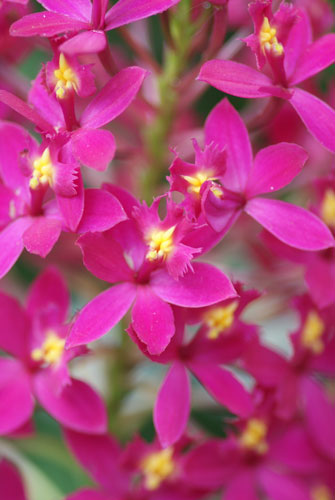Epidendrum Orchids
When European explorers were first learning about orchids, they created a genus of "Epidendrum orchids" that included all epiphytic orchids — those that grow on trees. The Epidendrum genus still contains over 1000 species, but now has a much clearer taxonomic definition, with its species now sharing a common ancestry sometime in the distant past. (They are no longer all epiphytic.) Epidendrum falls within subtribe Laeliinae, which makes them relatives of the better-known Cattleya orchid genus. They are often hybridized with other members of the Cattleya alliance.
Image courtesy of orchidgalore
Distributed under the Creative Commons Attribution 2.0 Generic license.